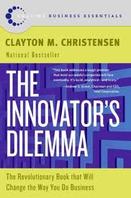|
It was long overdue, but I finally finished reading The Innovator's Dilemma by Clayton Christensen, an HBS professor. So many people kept citing this work around me, and I now understand why. The book is a bit slow and dry in its writing style, but the key points are incredibly deep, thought-provoking, and not as often discussed in start-up pop culture. My biggest takeaway is that when companies are doing the "right" things, like being good managers, following business school teachings, executing, listening to customers, etc., these practices that help them scale successfully are exactly the WRONG things to be doing when confronted with disruptive innovation. That's the core of the dilemma. As a start-up gets traction and grows into a big company, it makes it much less likely that it will be able to keep doing disruptive innovation. This is a really interesting concept, and one that's bittersweet. My notes are below. You can also download a great book guide that was included in the book at the bottom of this post (sorry for the quality, I took the photos on my phone). I really enjoyed the book, even though it took me a while to get through it (this was a physical copy I was reading for 10-20 pages at a time). Part 1: Why great companies can fail Ch. 1: How can great firms fail
1 Comment
7/24/2013 02:55:26 pm
Today I could find solution for many of my queries! I had a doubt in my mind regarding failure of some MNC and other important organizations! You have explained everything in detail here! Thanks you so much! Keep updating with us!
Reply
Your comment will be posted after it is approved.
Leave a Reply. |
Archives
June 2024
Categories
All
Subscribe |
||||||

 RSS Feed
RSS Feed
